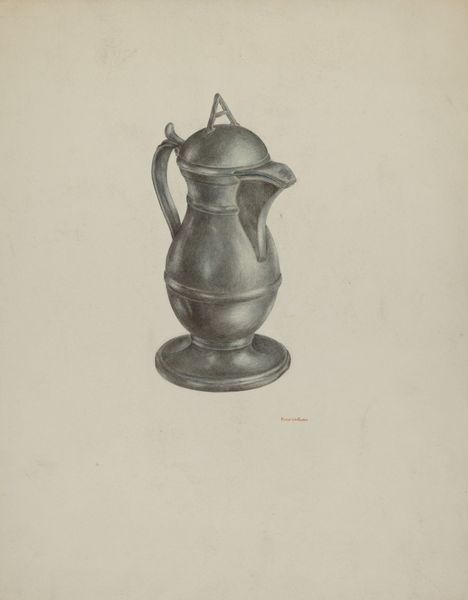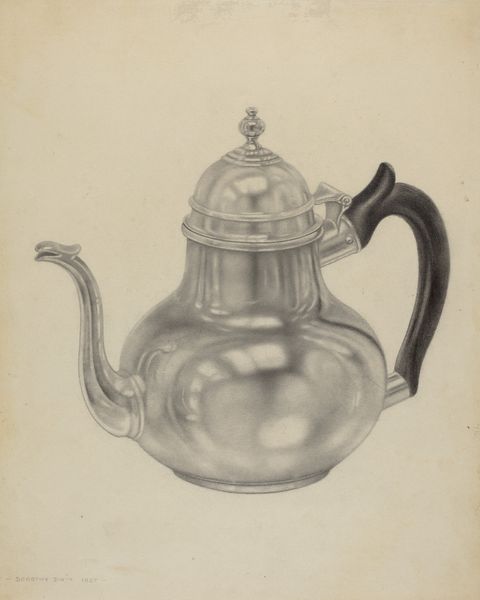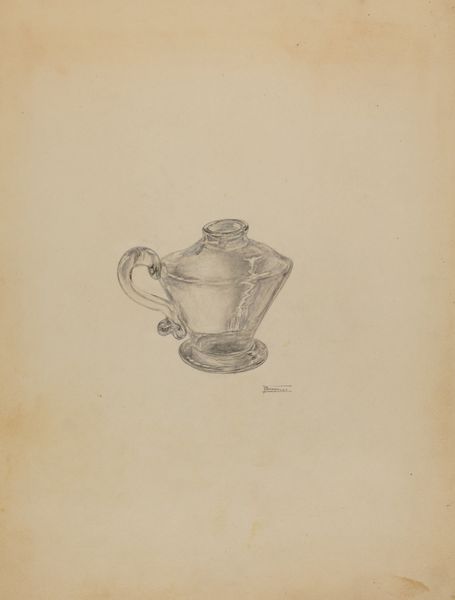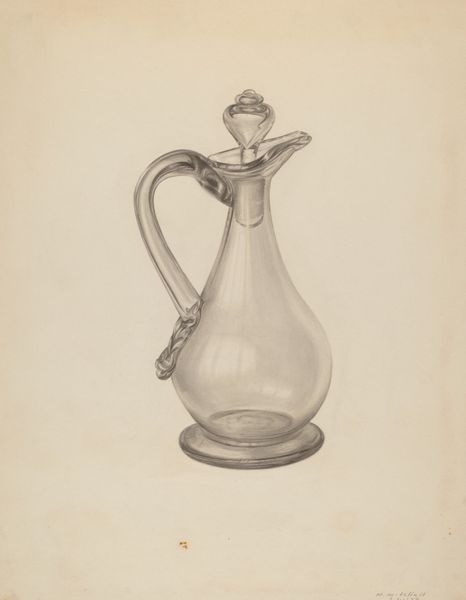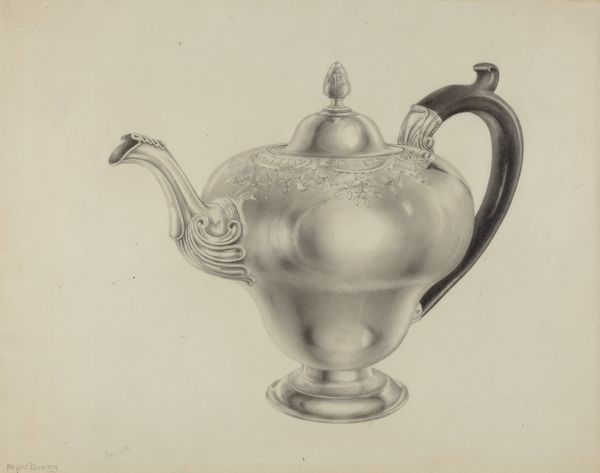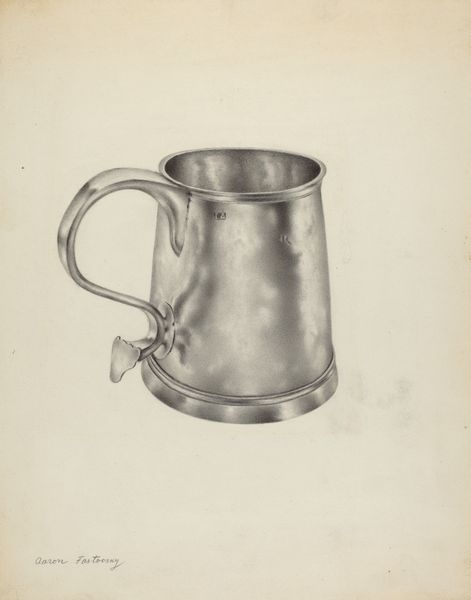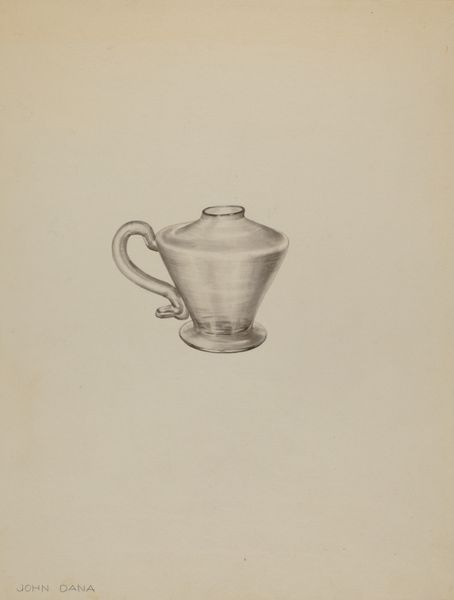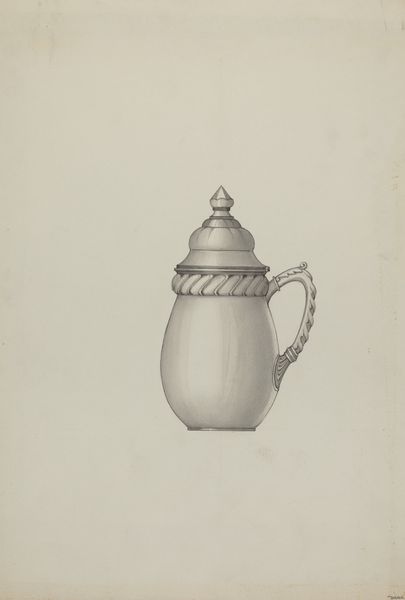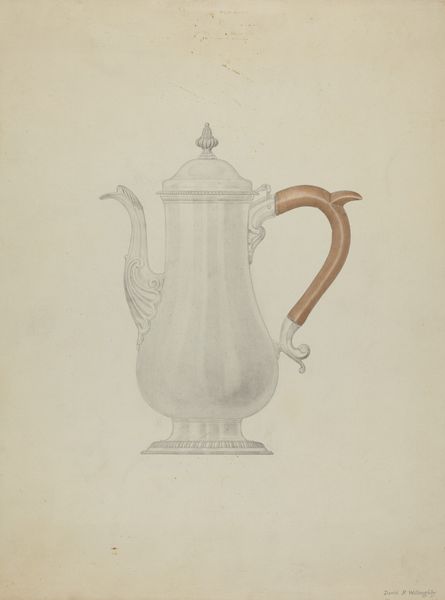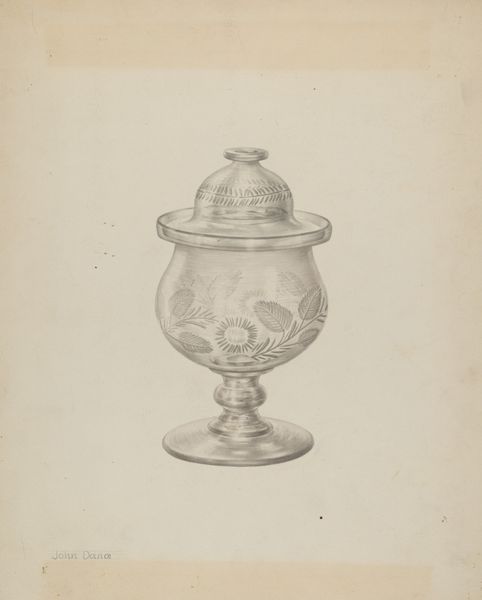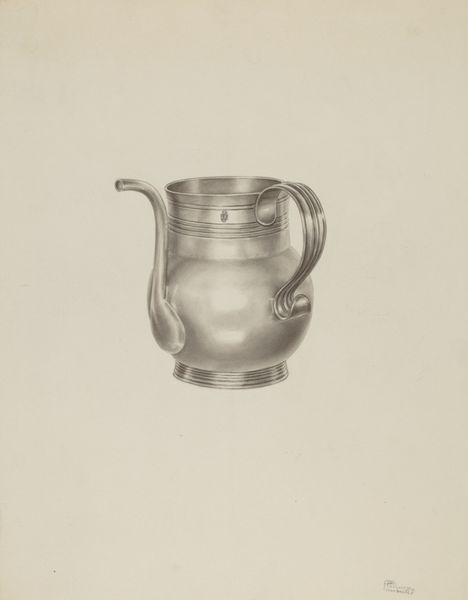
drawing, pencil
#
drawing
#
pencil drawing
#
pencil
#
realism
Dimensions: overall: 29 x 22.8 cm (11 7/16 x 9 in.) Original IAD Object: 4 3/4" high
Copyright: National Gallery of Art: CC0 1.0
Editor: This is Hester Duany's "Silver Mustard Pot," created around 1939, a pencil drawing that feels almost photographic in its detail. It seems to elevate this everyday object to something precious. What jumps out at you when you look at it? Curator: Considering its creation date, around 1939, it’s important to remember the looming shadow of World War II and the Depression’s lingering effects. Rendering a luxury item like a silver mustard pot with such care might be seen as a form of escapism, or perhaps even a quiet assertion of enduring value in a time of uncertainty. Do you think this kind of realism would appeal to audiences facing such stark economic challenges? Editor: That’s a perspective I hadn’t considered. It feels almost like a defiant act of beauty in a period of struggle. The level of detail seems to demand attention. Curator: Precisely! The choice of pencil as a medium is also intriguing. While the subject evokes opulence, the medium itself is quite humble and accessible. Perhaps the artist is exploring the relationship between aspiration and reality, subtly reminding us of the skill involved in crafting even everyday objects. It certainly raises the question of accessibility versus exclusivity, doesn't it? Editor: Definitely. It makes you think about who would have owned the silver mustard pot in the first place, and who would have been viewing or creating art during that time. The drawing is so neutral in tone. Almost as though she were making a precise scientific rendering rather than something creative. Curator: Yes, it has the precision of a catalogue image, yet the object itself speaks of aristocratic taste. These sorts of paradoxes encourage me to contemplate art's multifaceted roles in documenting and shaping society. Food in general, historically, speaks to power structures. Even salt and pepper! What does focusing on *mustard* reveal here, I wonder. Editor: This really highlights how context can reshape my initial reading of artwork. Curator: Agreed. Looking at art through its socio-political context allows a deeper appreciation and promotes richer narratives.
Comments
No comments
Be the first to comment and join the conversation on the ultimate creative platform.
